A good portion of the years 2017 to 2020 were consumed by a deep addiction to what I now view as the natural evolution of open persistent multiplayer worlds for emergent gameplay. (In short, virtual worlds where developers create systems built around driving random social interactions between players). I had dabbled in “roleplaying” in PC multiplayer games going back to the mid-90s, starting with BBS Door Games and peaking (for me) with Ultima Online and the roleplaying community there. My teenage self even somehow found the focus to create a website/IRC community around the roleplaying scene on Ultima Online’s Pacific shard (server) with a good friend of mine, Dan.
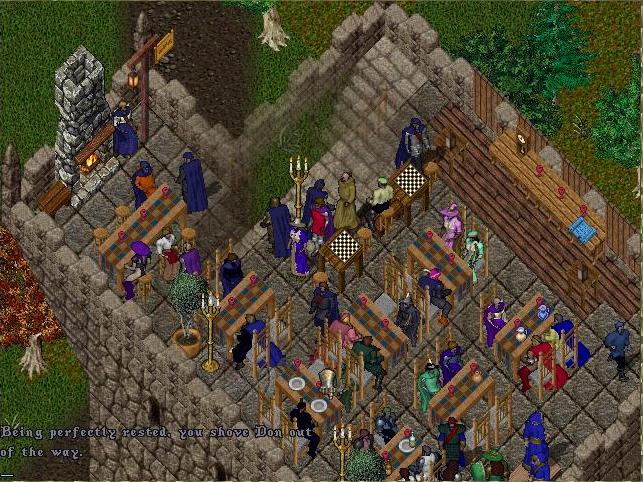
Roleplaying in the late 90s on Ultima Online’s Pacific Shard
That is a completely different story however, and not one that I am sure those of you who will read this came here for.
Early in 2017 I found myself sitting in my living room in Newport Beach – having just come home late from working on a (now shelved) VR open world design project at inXile Entertainment. My eyes were glued to the screen of my TV as I watched my roommate and coworker upstairs (Lou), appearing on the livestream of another friend (Kenny) as they slowly drove through the winding roads of the Vinewood Hills in GTA 5. Both Lou and Kenny were fully in character as “Capp”, and “Earthquake” respectively – two characters they each played in a closed roleplaying community built around the FiveM project framework (cfx.re). Capp was providing “speedy” private taxi services to Earthquake (Kenny’s female body builder character) and as the drive went on, a tongue in cheek and awkward romantic pass was made by Capp towards Earthquake. I watched this go on for hours, as their drive ended – as Earthquake continued her business in the Senora Desert – and spoke with Lou later that night in our kitchen about the highlights of the stream for me. What stuck with me after that night, and eventually drove me to apply to join this closed server roleplaying community was the absolute immersion and depth of the character interactions between two people I had known for years to be moderately trigger-happy survivors in DayZ – usually more apt to execute another survivor for their beans for a moment of amusing interaction than to risk character loss for more substantive player to player conversation.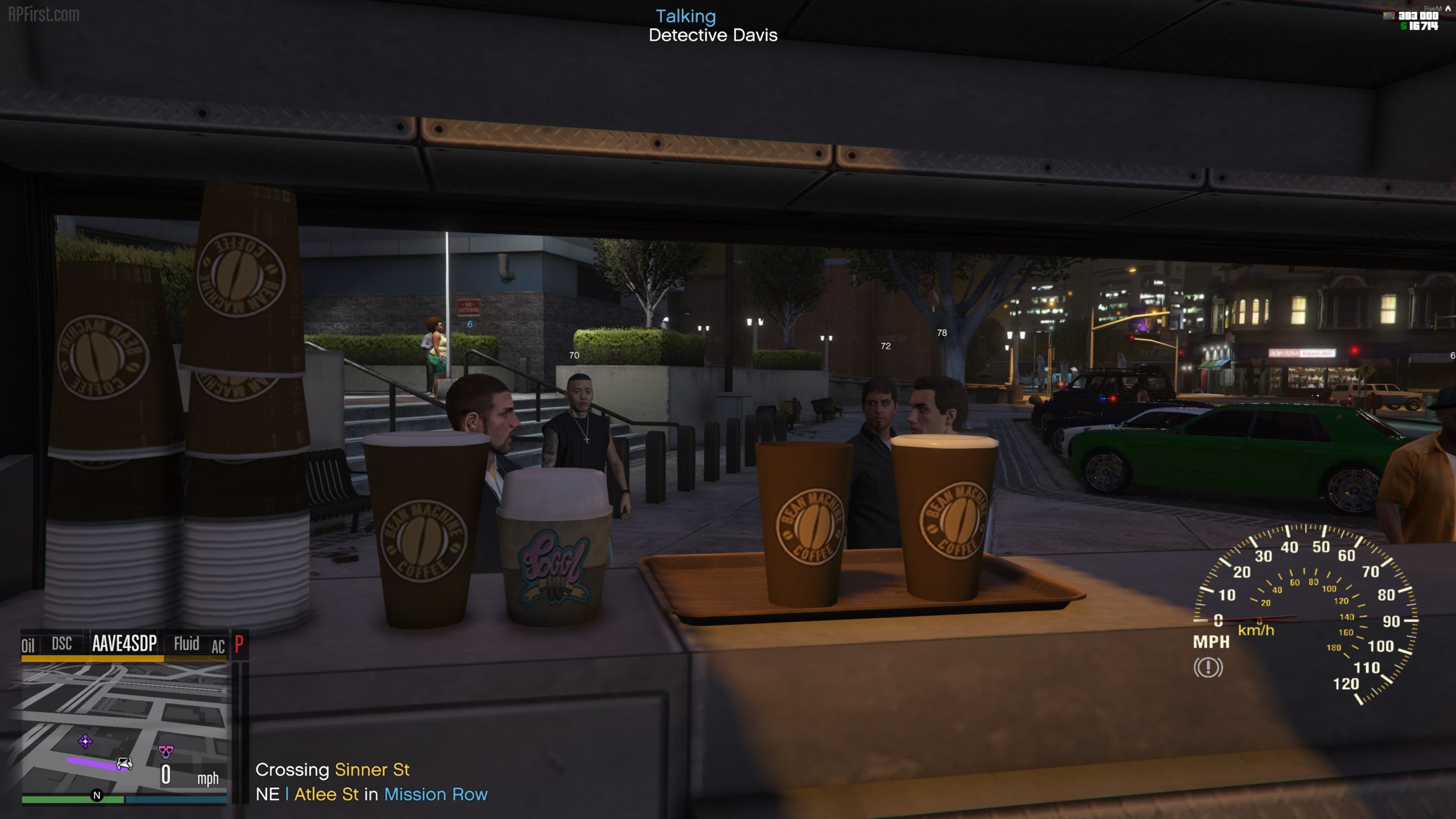
Players on RPFirst purchase coffee and tacos in front of Mission Row PD
By today’s standards, the systems that had been crudely scripted in Lua and C# to power that server community were basic and limited. However, as would be the theme of continued community development around the FiveM platform – content is king. What they lacked in complexity, was more than made up for in the sheer diversity of character meshes, accessory props, world locations, vehicle options, and so on – all thanks to work done years prior by the Rockstar Games team. 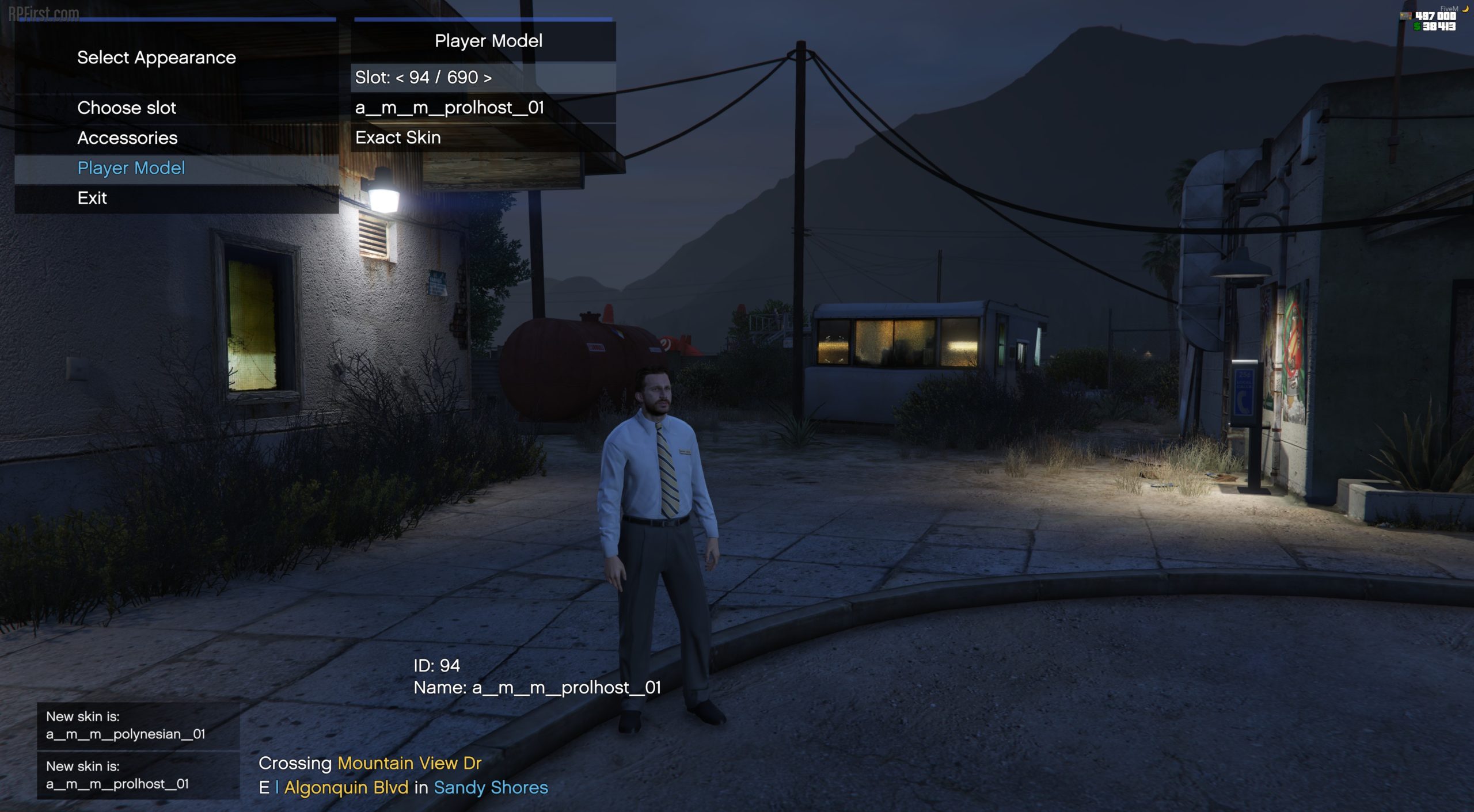
Early Character customization in GTA RP
Earlier success had been found by some of those same communities (e.g.: Nopixel.net) in platforms like Arma 2, and Arma 3 from Bohemia Interactive. The success and level of engagement / quantity of interest peaks however barely come close to anything that has been achieved under the FiveM and RedM platforms (again, both from the cfx.re team) – simply put, the nature of other platforms just did not present the same level of detail, immersion, and content that Rockstar provides in their open worlds (in my opinion at least). Arma titles while very modding friendly, are clearly built for military simulation and as such lend themselves to a more fast and loose, short term style of roleplaying – one (again.. in my opinion) closer to the type you would see in Space Station 13, Trouble in Terrorist Town, Unfortunate Spacemen, and similar. I have found myself completely enthralled in slow burn character arcs and plot lines within the GTA era of roleplaying, on par with some of the best serialized dramas I have enjoyed on traditional television.

Walter Fop mediates peace between Ashlynn Cooter and Rich Stephens
For three years I found myself immersed in both the roleplaying, and design around roleplaying in these sandboxes. From playing my own characters in communities like RP First, True Los Santos, Nopixel, and The Family RP – to familiarizing myself with the documentation and functions of FiveM to support True Los Santos after the community was handed over to me. This provided both entertainment for me outside of work, and a more hands on creative input for me as I spent more and more time at work managing the project, people, and design documentation. The opportunity to get hands directly on the code powering these worlds, to be able to rapidly prototype on paper and implement in a live production environment kept my creative brain engaged and active. It was during these years that I began to see and understand direct parallels between what keeps the users of these communities engaged, and some of the core design pillars of the experiences that formed me as a designer – Be it Ultima Online, DayZ, Legend of the Red Dragon, Zork, or even Star Wars Galaxies. The developers who spent their time writing the systems that framed these worlds, and the administrators/moderators were consistently smashing up against a classic design wall that I myself have been guilty of time, and time again.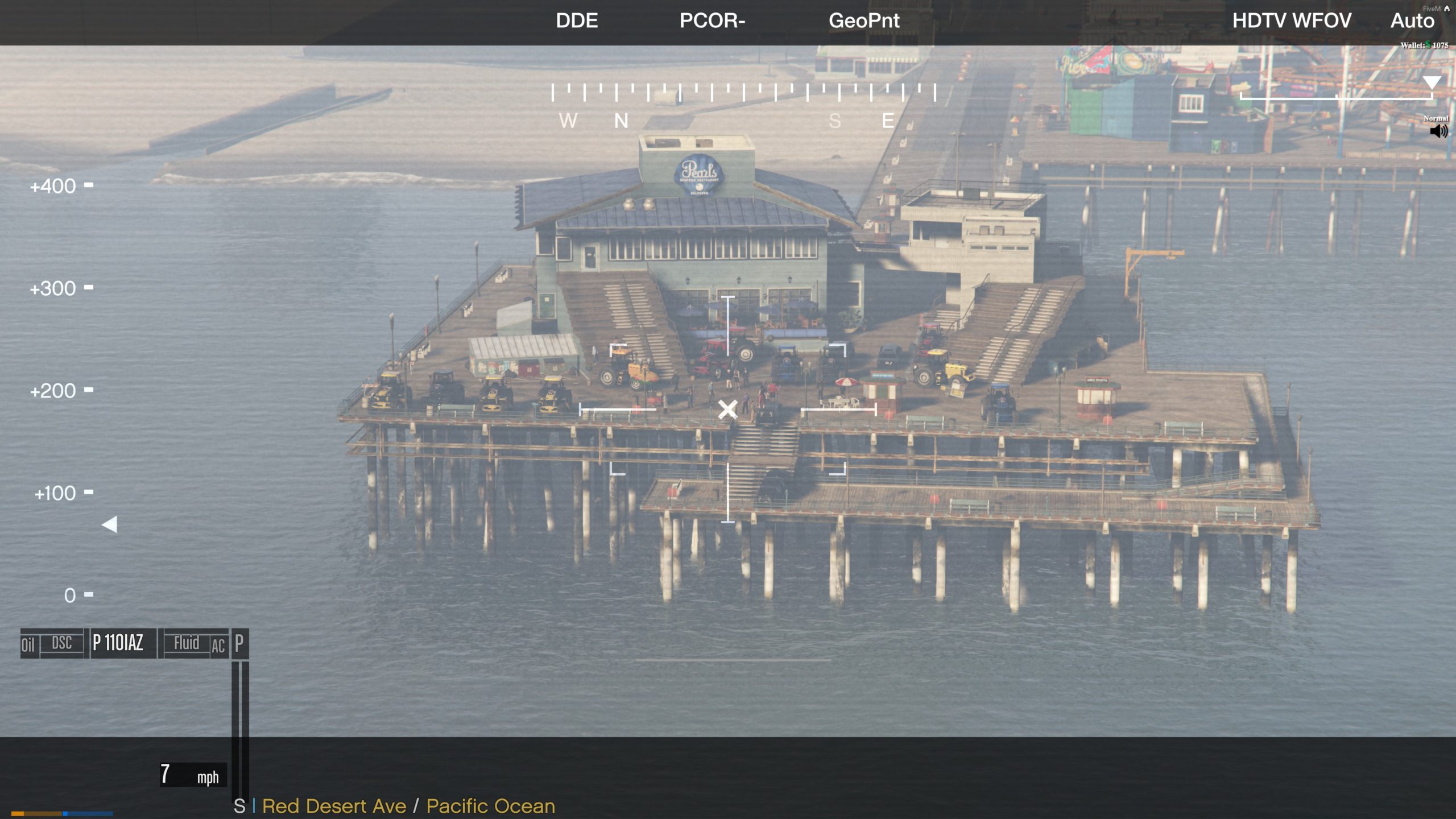
Players on TLS RP create their own social space during downtime
Player behavior was running counter to the design intent of the primary gameplay systems. While users sometimes would engage with systems as they were designed, more often than not – after the initial interest of pushing a new major update to any of these communities wore off, users returned to what typically has been viewed as less-than-ideal behavior.
Specifically – the issue can be viewed in the following example:
– Server Developers publish a major gameplay system update, such as new professions
– Players rush to experience the system and grok it
– There is a vacuum of player population in adjacent required professions
– Players “hit the wall” with their enjoyment
– Players return to a centralized social space rather than continue interaction through their professions
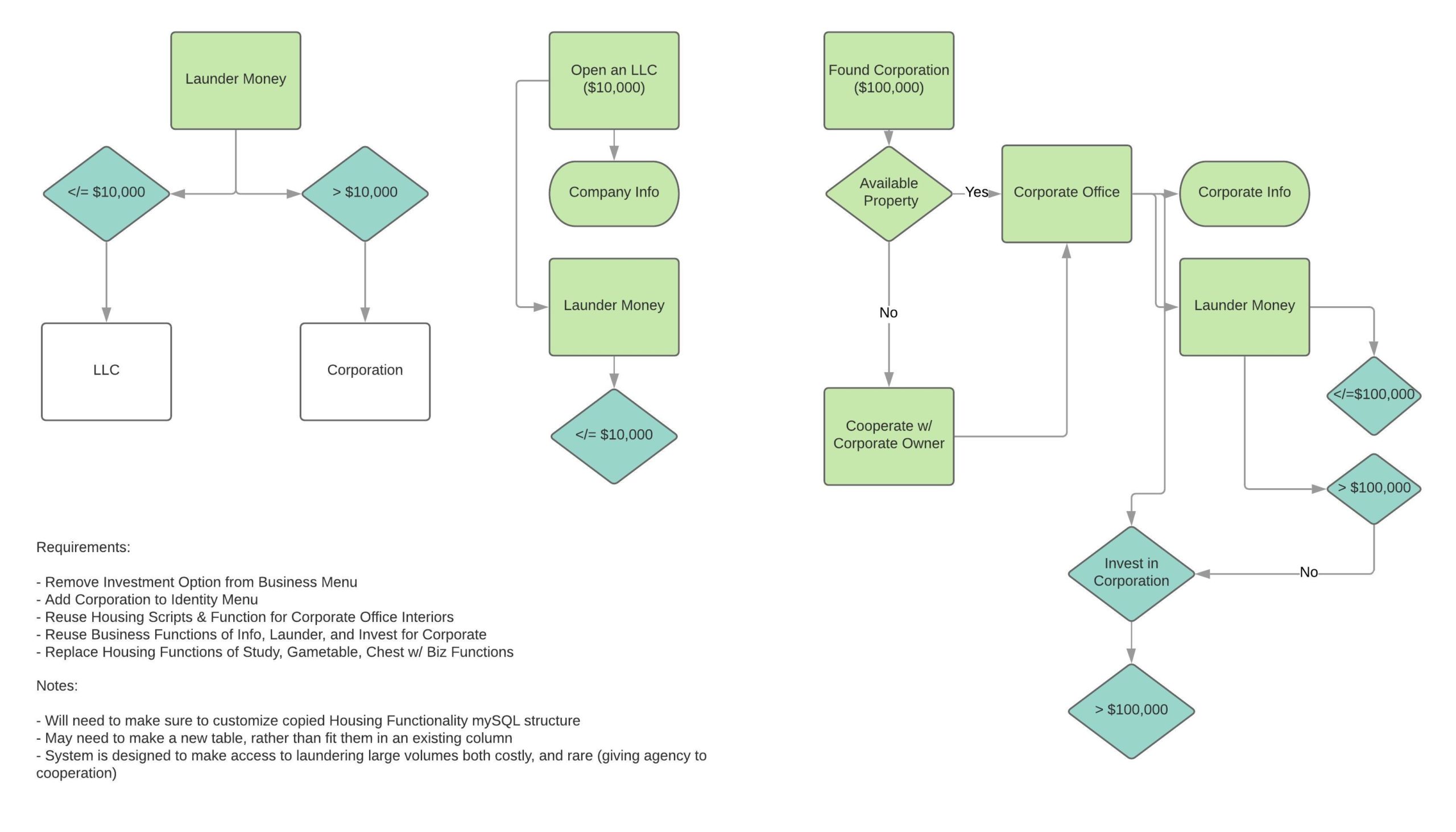
Early mockup proposing system refactor on TLS RP
The more I reflect on this, and even the steps I tried to continuously take to address it – I think I/we have been wrong in how we approach this as a problem. The problem is not, nor has it ever been that we have yet to find the magic formula for interacting gameplay systems, and player roles within the world – Nor is it that the players are not “roleplaying properly” or being selfish.
Engaging virtual worlds are not as much built from building an intricate role dependency, or even forcing a player into a situation that can only be meaningfully progressed with the help of other players. The true anchor points of what makes experiences like GTA RP or DayZ sing is the time between engagement with other players. Too often and the interactions do not carry as much weight and value, too far apart and the players get bored – and are suddenly reminded that they are moving variables between interconnected systems – something they could easily be doing in a single player environment, or even from a practical standpoint do not find fun or engaging.
Bored Players make their own fun on TLS RP
Raph Koster’s book “Postmortems: Selected Essays Volume One” contains a very relevant chapter to the struggles Grand Theft Auto roleplaying communities often face. Specifically, the section titled Socialization and Convenience (located on page 392).
We (those of us running or developing roleplaying communities within FiveM/RedM) far too often decry the idea of “parking lot RP”. Simply put, parking lot RP is the phenomenon of players congregating around a central location for the majority of their time in game / connected to the server for conversations in a circle, a line – effectively a gaggle of player characters all having conversations (and not interacting with the gameplay systems that define the world). Classically this would be thought of as a community problem, but after spending time reading the above-mentioned section of Raph’s book – I do not think it is (or at least, not as it is traditionally thought of).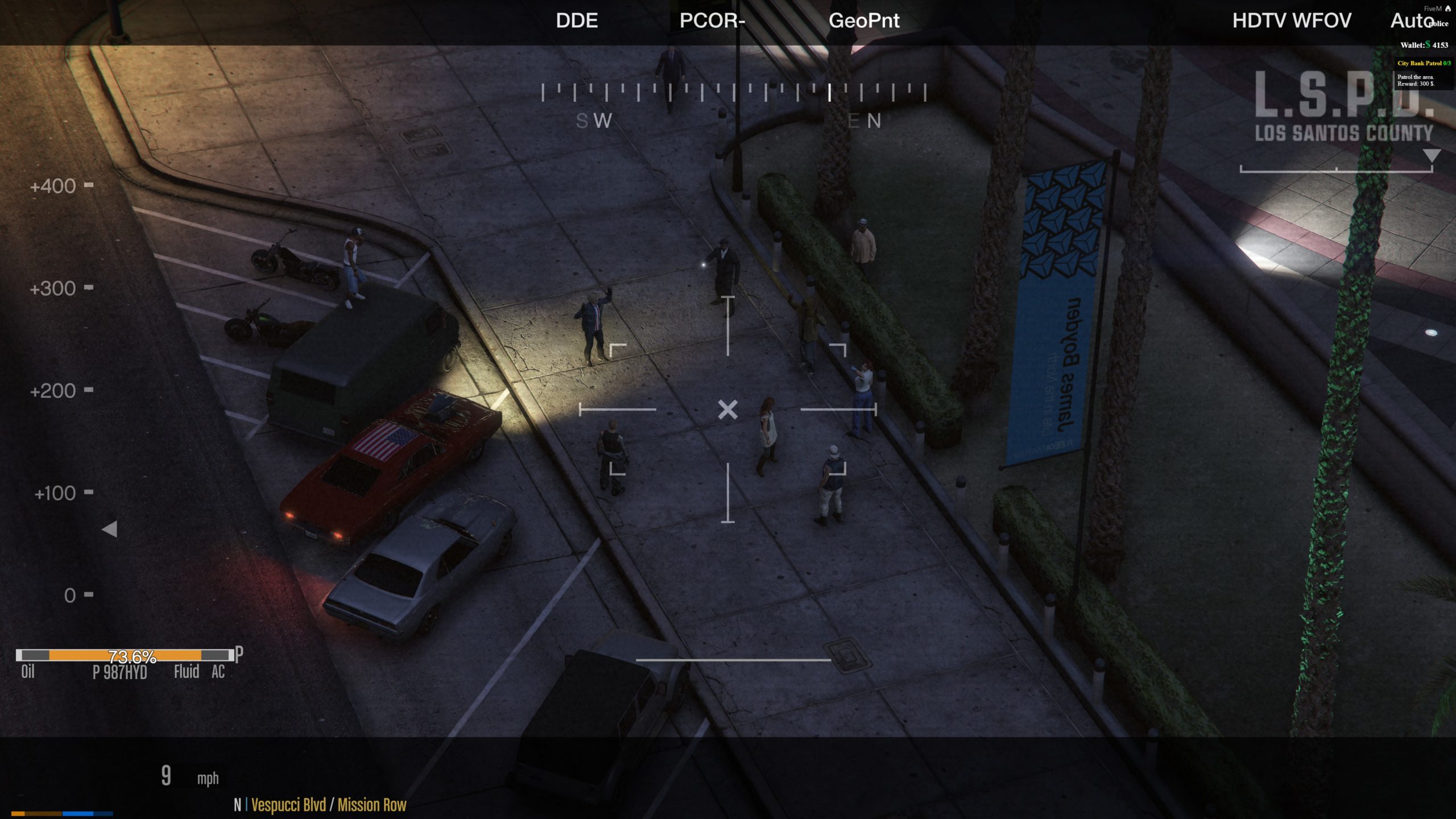
Classically defined “Parking Lot RP” as players gather at Legion Square
Socialization requires downtime, and in parking lot RP situations this is exactly what we are seeing. Player congregating for all three of the types of social spaces Raph and his team mention in the book:
– Staging: Typically, parking lot RP is at or near a “garage” where players can retrieve or store their personal vehicles – something every player does, and often.
– Pit Stop: Shops, Apartments, and Profession Centers often serve as pit stops to larger adventures and see high player traffic.
– Recovery: Hospitals, and Police Stations/Jails often serve as the recovery phase at/near completion of adventures/crime and thus see a high amount of player traffic.
Traffic patterns (a direct biproduct of how gameplay systems and professions are configured) play a big role in how players seek out this downtime-based socialization (as often the tent pole gameplay is too fast moving, or time sensitive for meaningful high-frequency interaction) and honestly, in my opinion are exactly why so many GTA roleplaying communities all seemed to arrive at the same undesired socialization location: Legion Square.
Bored players can and will find their own fun (Not always a bad thing!)
Throughout the years, some communities and developers tried to address this (myself included) by spreading out the socialization locations of each category and stretching out the steps required for Staging social locations – with the intention of breaking up the cluster of concentrated players. Now while in some cases this did result in interesting iterations on tired player professions and connected systems – in the end it always resulted in players unintentionally creating a new centralized social space – and thus diluting the immersion of the gameplay world.
Taking a step back and looking at how Traffic Patterns have created social spaces unintentionally within FiveM and RedM gameplay, with the knowledge of the types of social spaces above illuminates the situation. Traditionally, Legion Square in Grand Theft Auto 5 was an unintentional social space – and on a more contemporary level Valentine in Red Dead Redemption has served to create this. When looking at Legion Square and the mechanics that have traditionally been created around it you realize that before any roleplaying systems are written it is already heavily favored to become a social space. With the primary Police Department structure one block away, a Fleeca Bank interior to one side of the square, a parking lot to the other side, and the Hospital almost equal distance to the square that the Police Department is – Players are naturally going to flock to this area.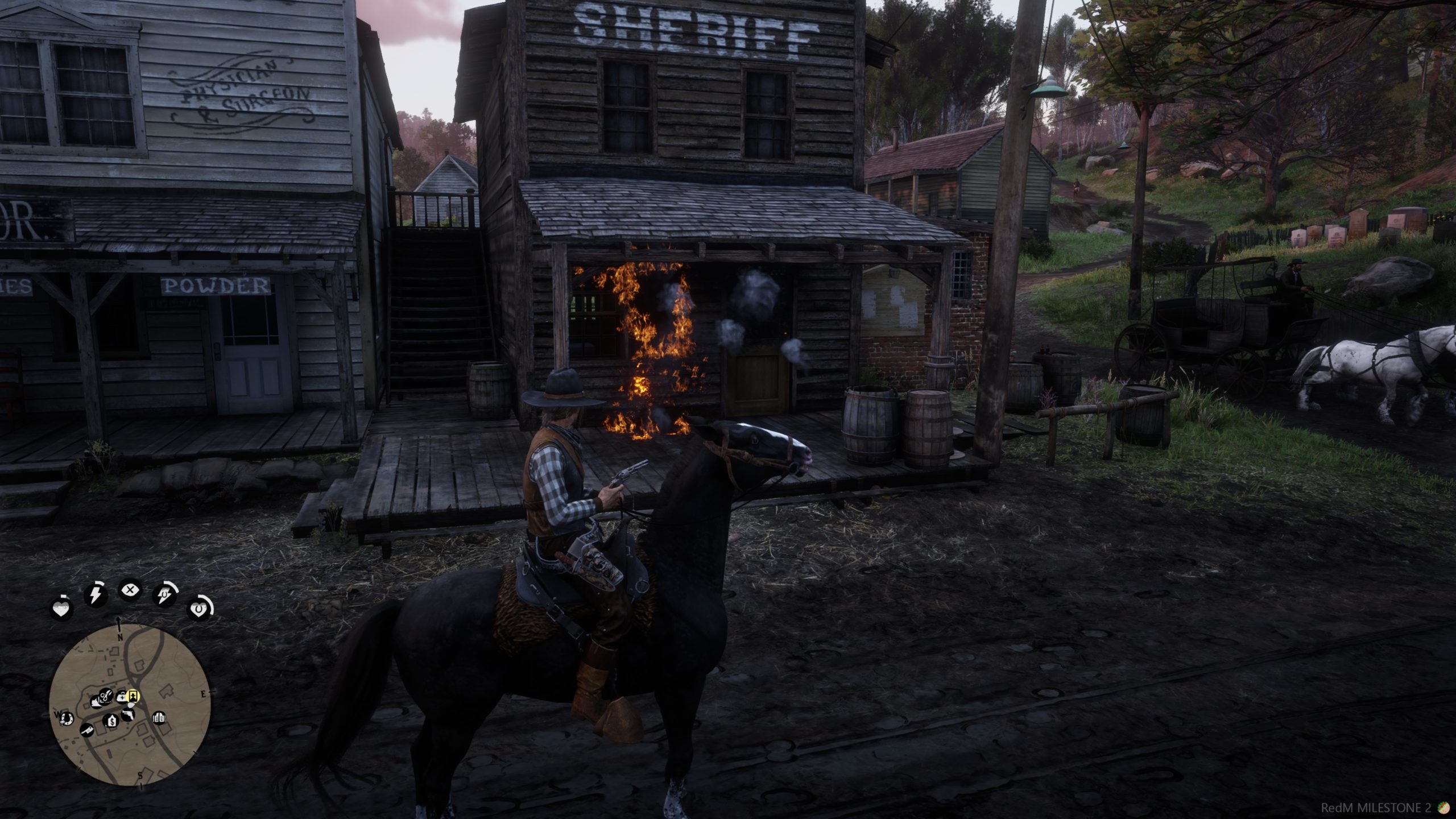
On the Valentine “Main Drag”
Valentine naturally benefits from having a saloon in it, and all the tropes that go with that – but by its design alone as a “main drag” one street town it features the Jail, Doctor, General Store, Gun Store, Tailor, and Bank all on that primary street. Valentine by its nature, and design by Rockstar was destined to cause players to gravitate towards it for social interaction far more than even the most detailed areas of Red Dead Redemption 2.
This is not undesirable gameplay however! Town Square mentality is clearly social, but also friendly to first time users (FTUE being a huge issue that GTA RP servers suffer from, right next to UX overall). I would argue that more recently, it appears that Koil (Nopixel.net owner) has recognized this, as I have seen the center of social interaction migrate away from Legion Square as a social hub, following intentional design work focusing early gameplay around hotels nearby other key social spaces for downtime. (E.g.: Player Hotels North of Del Perro Fwy across from another Bank Location). 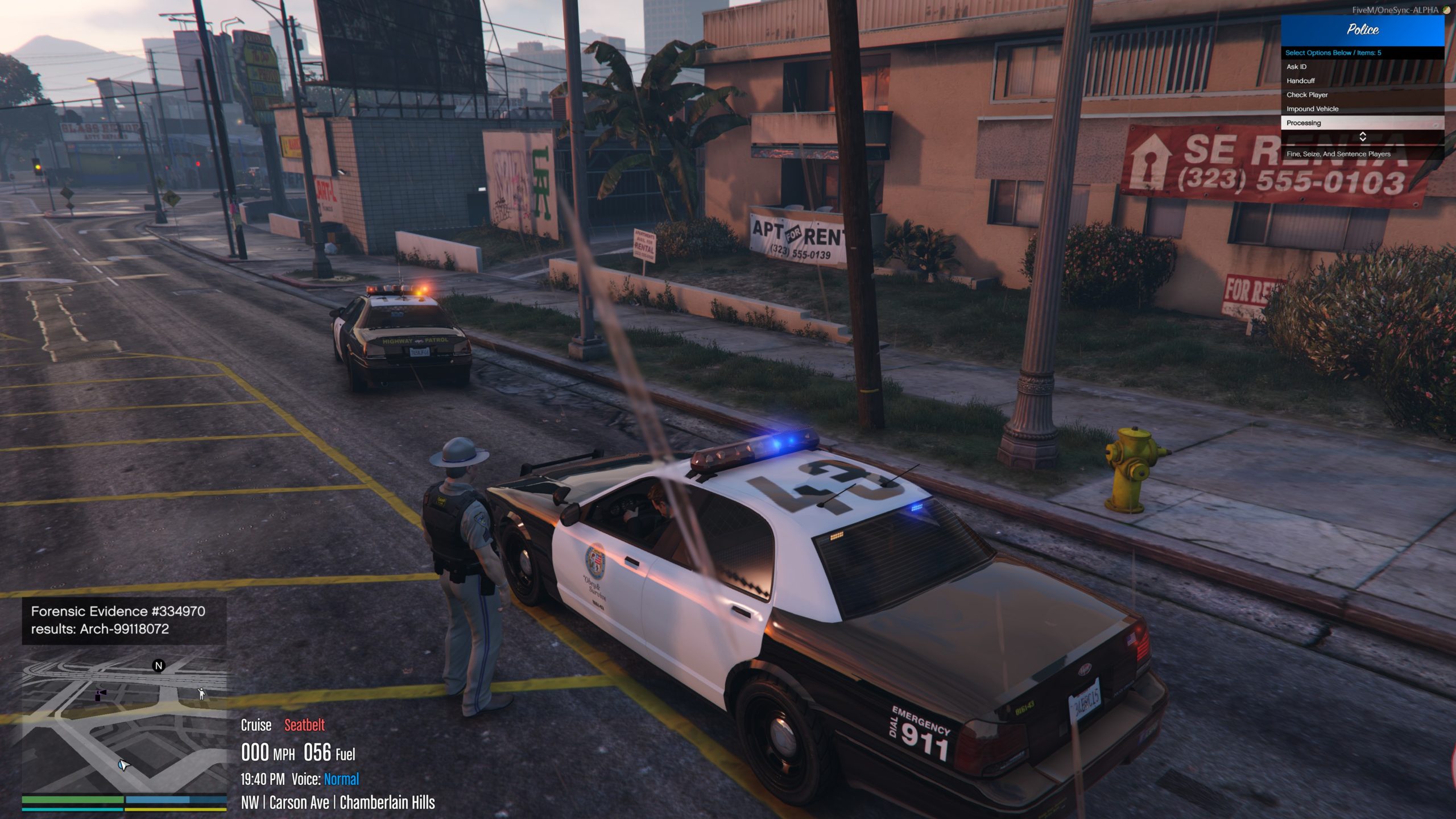
In Game Forensics expanded the Law Enforcement gameplay into more active forms
I genuinely believe (at least at the time of writing this) that the answer does not exclusively lie within continuing to write and rewrite the framing gameplay and profession systems of these roleplaying communities, and instead spend more time looking from a high level at the traffic patterns of gameplay we create. Look at the natural crossroads that are created as a biproduct and develop with these in mind. Not avoiding them, but instead embracing them and using them to the betterment of the communities, and the holy grail of all roleplaying worlds – the immersion. (Stop trying to force players to go through our hamster wheels or create undesirable downtime, and instead aim to create traffic patterns that empower meaningful player interaction as organically as possible – because it is that exact emergent gameplay that drives people back to these types of Online Virtual Worlds)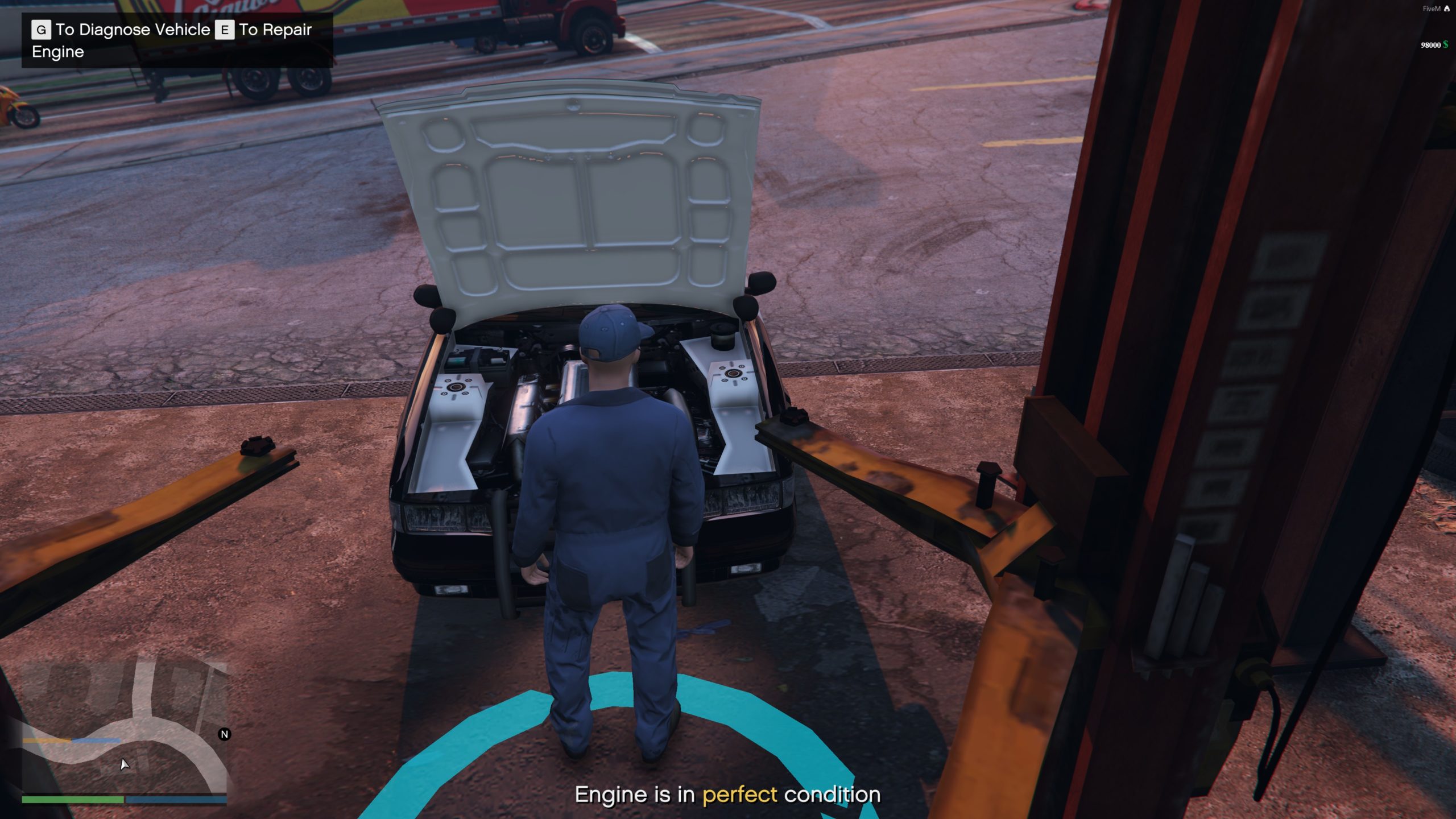
A Player Mechanic Shop – The UO Blacksmith Reborn
Time will tell, as communities like Nopixel continue to thrive and development teams increase from a few people putting in what free time they can find, to actual small teams of developers able to leverage more specialized experience and iterate on gameplay. I for one continue to be amazed at what Koil and his team have put out with each major refactor of their systems.
As for me – I intend to dive back into that world. Dust off the domain name for my old roleplaying community (theprc.com) and dive into working with the developers and staff there to keep my own design skills sharp, and my creative mind engaged.
There is so much more I want to talk about in terms of Online Virtual Worlds – including the monster scope and effort that properly trying to develop a title from the ground up to capitalize on the GTA RP interest would be – but we will tackle that later.

